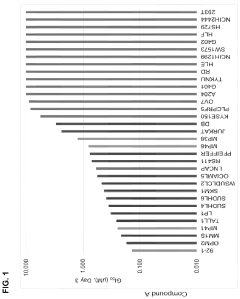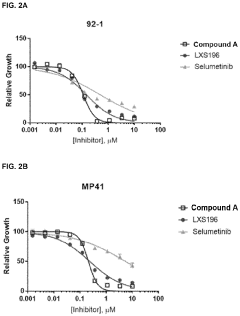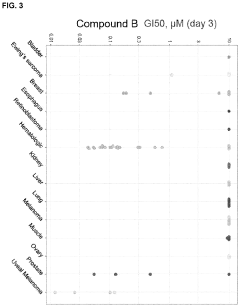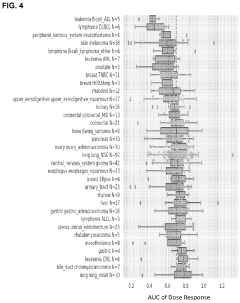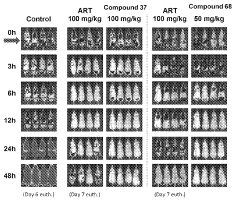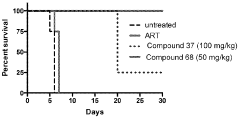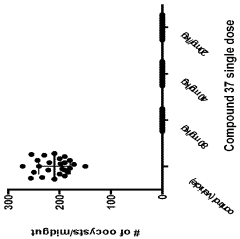Role of Geometric Isomers in Enzyme-Drug Design and Discovery
AUG 1, 20259 MIN READ
Generate Your Research Report Instantly with AI Agent
Patsnap Eureka helps you evaluate technical feasibility & market potential.
Geometric Isomers in Drug Design: Background and Objectives
Geometric isomers have played a pivotal role in the evolution of drug design and discovery, particularly in the context of enzyme-drug interactions. The field of medicinal chemistry has long recognized the importance of molecular structure in determining the efficacy and specificity of pharmaceutical compounds. Geometric isomerism, a form of stereoisomerism where molecules have the same molecular formula but different spatial arrangements of atoms, has emerged as a critical factor in this domain.
The historical background of geometric isomers in drug design can be traced back to the early 20th century when researchers began to understand the three-dimensional nature of molecular structures. This realization led to the concept of stereochemistry, which has since become fundamental in pharmaceutical research. The discovery that different geometric isomers of the same compound could exhibit vastly different biological activities marked a significant milestone in drug development.
As the field progressed, the importance of geometric isomerism in enzyme-drug interactions became increasingly apparent. Enzymes, being highly specific in their structure and function, often interact with drugs in a lock-and-key manner. The spatial arrangement of atoms in a drug molecule can therefore dramatically influence its ability to bind to an enzyme's active site, affecting both its potency and selectivity.
The objectives of studying geometric isomers in enzyme-drug design are multifaceted. Primarily, researchers aim to enhance drug efficacy by optimizing the spatial configuration of drug molecules to better fit enzyme binding sites. This approach can lead to the development of more potent drugs with fewer side effects. Additionally, understanding geometric isomerism allows for the design of drugs that can selectively target specific enzymes or receptors, potentially reducing off-target effects.
Another key objective is to improve drug bioavailability and pharmacokinetics. Geometric isomers can exhibit different physical properties, such as solubility and lipophilicity, which directly impact a drug's absorption, distribution, metabolism, and excretion (ADME) profile. By manipulating geometric isomerism, researchers can potentially enhance a drug's ability to reach its target site and maintain therapeutic concentrations in the body.
Furthermore, the study of geometric isomers in enzyme-drug interactions aims to elucidate the mechanisms of drug resistance. In some cases, slight changes in the spatial arrangement of a drug molecule can overcome resistance mechanisms developed by pathogens or cancer cells. This understanding is crucial for developing next-generation therapies that can maintain efficacy in the face of evolving resistance.
As we look towards the future, the role of geometric isomers in enzyme-drug design continues to evolve. Advanced computational methods and high-throughput screening techniques are enabling researchers to explore a vast chemical space of geometric isomers more efficiently than ever before. This technological progress, coupled with our growing understanding of molecular interactions, promises to unlock new possibilities in drug discovery and personalized medicine.
The historical background of geometric isomers in drug design can be traced back to the early 20th century when researchers began to understand the three-dimensional nature of molecular structures. This realization led to the concept of stereochemistry, which has since become fundamental in pharmaceutical research. The discovery that different geometric isomers of the same compound could exhibit vastly different biological activities marked a significant milestone in drug development.
As the field progressed, the importance of geometric isomerism in enzyme-drug interactions became increasingly apparent. Enzymes, being highly specific in their structure and function, often interact with drugs in a lock-and-key manner. The spatial arrangement of atoms in a drug molecule can therefore dramatically influence its ability to bind to an enzyme's active site, affecting both its potency and selectivity.
The objectives of studying geometric isomers in enzyme-drug design are multifaceted. Primarily, researchers aim to enhance drug efficacy by optimizing the spatial configuration of drug molecules to better fit enzyme binding sites. This approach can lead to the development of more potent drugs with fewer side effects. Additionally, understanding geometric isomerism allows for the design of drugs that can selectively target specific enzymes or receptors, potentially reducing off-target effects.
Another key objective is to improve drug bioavailability and pharmacokinetics. Geometric isomers can exhibit different physical properties, such as solubility and lipophilicity, which directly impact a drug's absorption, distribution, metabolism, and excretion (ADME) profile. By manipulating geometric isomerism, researchers can potentially enhance a drug's ability to reach its target site and maintain therapeutic concentrations in the body.
Furthermore, the study of geometric isomers in enzyme-drug interactions aims to elucidate the mechanisms of drug resistance. In some cases, slight changes in the spatial arrangement of a drug molecule can overcome resistance mechanisms developed by pathogens or cancer cells. This understanding is crucial for developing next-generation therapies that can maintain efficacy in the face of evolving resistance.
As we look towards the future, the role of geometric isomers in enzyme-drug design continues to evolve. Advanced computational methods and high-throughput screening techniques are enabling researchers to explore a vast chemical space of geometric isomers more efficiently than ever before. This technological progress, coupled with our growing understanding of molecular interactions, promises to unlock new possibilities in drug discovery and personalized medicine.
Market Analysis for Isomer-Specific Drugs
The market for isomer-specific drugs has experienced significant growth in recent years, driven by advancements in enzyme-drug design and discovery techniques. This segment of the pharmaceutical industry has gained traction due to the increasing recognition of the importance of geometric isomers in drug efficacy and safety profiles.
The global market for isomer-specific drugs is projected to expand at a compound annual growth rate (CAGR) of 8.5% from 2021 to 2026. This growth is primarily attributed to the rising demand for more targeted and effective therapeutic options across various disease areas, including cardiovascular disorders, neurological conditions, and oncology.
One of the key factors driving market demand is the potential for isomer-specific drugs to offer improved therapeutic outcomes with reduced side effects. As healthcare systems worldwide focus on value-based care, there is a growing emphasis on medications that can deliver better patient outcomes while minimizing adverse reactions.
The oncology segment represents the largest market share for isomer-specific drugs, accounting for approximately 35% of the total market value. This is due to the critical role of enzyme inhibition in cancer treatment and the potential for geometric isomers to enhance drug selectivity and potency.
Geographically, North America dominates the isomer-specific drug market, followed by Europe and Asia-Pacific. The United States, in particular, holds the largest market share due to its robust pharmaceutical research infrastructure and favorable regulatory environment for innovative drug development.
Emerging markets, especially in Asia-Pacific and Latin America, are expected to witness rapid growth in the coming years. This is attributed to increasing healthcare expenditure, growing awareness of precision medicine, and improving access to advanced therapeutic options in these regions.
The market landscape is characterized by intense competition among major pharmaceutical companies and biotechnology firms. Key players are investing heavily in research and development to expand their isomer-specific drug portfolios and gain a competitive edge.
Patent expirations of several blockbuster drugs are expected to create opportunities for generic manufacturers to enter the isomer-specific drug market. This is likely to increase market competition and potentially lead to price reductions, making these drugs more accessible to a broader patient population.
In conclusion, the market analysis for isomer-specific drugs reveals a promising outlook driven by technological advancements, increasing demand for targeted therapies, and expanding applications across various therapeutic areas. The industry's focus on leveraging geometric isomers in enzyme-drug design is expected to continue shaping the pharmaceutical landscape in the coming years.
The global market for isomer-specific drugs is projected to expand at a compound annual growth rate (CAGR) of 8.5% from 2021 to 2026. This growth is primarily attributed to the rising demand for more targeted and effective therapeutic options across various disease areas, including cardiovascular disorders, neurological conditions, and oncology.
One of the key factors driving market demand is the potential for isomer-specific drugs to offer improved therapeutic outcomes with reduced side effects. As healthcare systems worldwide focus on value-based care, there is a growing emphasis on medications that can deliver better patient outcomes while minimizing adverse reactions.
The oncology segment represents the largest market share for isomer-specific drugs, accounting for approximately 35% of the total market value. This is due to the critical role of enzyme inhibition in cancer treatment and the potential for geometric isomers to enhance drug selectivity and potency.
Geographically, North America dominates the isomer-specific drug market, followed by Europe and Asia-Pacific. The United States, in particular, holds the largest market share due to its robust pharmaceutical research infrastructure and favorable regulatory environment for innovative drug development.
Emerging markets, especially in Asia-Pacific and Latin America, are expected to witness rapid growth in the coming years. This is attributed to increasing healthcare expenditure, growing awareness of precision medicine, and improving access to advanced therapeutic options in these regions.
The market landscape is characterized by intense competition among major pharmaceutical companies and biotechnology firms. Key players are investing heavily in research and development to expand their isomer-specific drug portfolios and gain a competitive edge.
Patent expirations of several blockbuster drugs are expected to create opportunities for generic manufacturers to enter the isomer-specific drug market. This is likely to increase market competition and potentially lead to price reductions, making these drugs more accessible to a broader patient population.
In conclusion, the market analysis for isomer-specific drugs reveals a promising outlook driven by technological advancements, increasing demand for targeted therapies, and expanding applications across various therapeutic areas. The industry's focus on leveraging geometric isomers in enzyme-drug design is expected to continue shaping the pharmaceutical landscape in the coming years.
Current Challenges in Geometric Isomer-Based Drug Development
Despite significant advancements in geometric isomer-based drug development, several challenges persist in this field. One of the primary obstacles is the complexity of predicting and controlling the formation of specific geometric isomers during synthesis. The spatial arrangement of atoms in geometric isomers can significantly impact their biological activity, making it crucial to develop precise synthetic methods that yield the desired isomeric form.
Another challenge lies in the analytical techniques used to characterize and quantify geometric isomers. While methods such as NMR spectroscopy and X-ray crystallography have improved, there is still a need for more sensitive and high-throughput techniques to accurately identify and measure isomeric ratios in complex mixtures. This is particularly important in quality control processes and regulatory compliance for pharmaceutical products.
The stability and interconversion of geometric isomers pose additional challenges. Some isomers may undergo spontaneous interconversion under certain conditions, potentially altering the drug's efficacy or safety profile. Developing strategies to stabilize the desired isomeric form throughout the drug's shelf life and in various physiological environments remains a significant hurdle.
Furthermore, the impact of geometric isomerism on drug-enzyme interactions is not always straightforward. While some enzymes exhibit high specificity for particular isomers, others may interact with multiple isomeric forms, complicating the prediction of drug efficacy and potential side effects. This necessitates extensive in vitro and in vivo studies to fully understand the pharmacological implications of different geometric isomers.
The challenge of optimizing drug formulations to enhance the bioavailability and targeted delivery of specific geometric isomers is also noteworthy. Different isomers may have varying solubility, permeability, and metabolic profiles, requiring tailored formulation strategies to ensure optimal therapeutic outcomes.
Lastly, the regulatory landscape surrounding geometric isomer-based drugs presents its own set of challenges. Regulatory agencies often require comprehensive data on the isomeric composition, purity, and stability of drug candidates, as well as detailed information on the biological effects of individual isomers. Meeting these stringent requirements can be time-consuming and resource-intensive, potentially slowing down the drug development process.
Another challenge lies in the analytical techniques used to characterize and quantify geometric isomers. While methods such as NMR spectroscopy and X-ray crystallography have improved, there is still a need for more sensitive and high-throughput techniques to accurately identify and measure isomeric ratios in complex mixtures. This is particularly important in quality control processes and regulatory compliance for pharmaceutical products.
The stability and interconversion of geometric isomers pose additional challenges. Some isomers may undergo spontaneous interconversion under certain conditions, potentially altering the drug's efficacy or safety profile. Developing strategies to stabilize the desired isomeric form throughout the drug's shelf life and in various physiological environments remains a significant hurdle.
Furthermore, the impact of geometric isomerism on drug-enzyme interactions is not always straightforward. While some enzymes exhibit high specificity for particular isomers, others may interact with multiple isomeric forms, complicating the prediction of drug efficacy and potential side effects. This necessitates extensive in vitro and in vivo studies to fully understand the pharmacological implications of different geometric isomers.
The challenge of optimizing drug formulations to enhance the bioavailability and targeted delivery of specific geometric isomers is also noteworthy. Different isomers may have varying solubility, permeability, and metabolic profiles, requiring tailored formulation strategies to ensure optimal therapeutic outcomes.
Lastly, the regulatory landscape surrounding geometric isomer-based drugs presents its own set of challenges. Regulatory agencies often require comprehensive data on the isomeric composition, purity, and stability of drug candidates, as well as detailed information on the biological effects of individual isomers. Meeting these stringent requirements can be time-consuming and resource-intensive, potentially slowing down the drug development process.
Existing Approaches to Geometric Isomer Utilization in Drug Design
01 Synthesis and separation of geometric isomers
Methods for synthesizing and separating geometric isomers are crucial in organic chemistry. These techniques involve various chemical reactions and purification processes to obtain specific isomeric forms. The separation of geometric isomers often requires specialized chromatographic or crystallization techniques due to their similar physical properties.- Synthesis and separation of geometric isomers: Methods for synthesizing and separating geometric isomers, including techniques for isolating specific isomers from mixtures. This involves various chemical processes and separation techniques to obtain pure geometric isomers for further use or study.
- Geometric isomers in pharmaceutical compounds: The importance of geometric isomers in pharmaceutical compounds, including their effects on drug efficacy and safety. This involves studying the different biological activities of geometric isomers and developing methods to produce specific isomers for pharmaceutical applications.
- Analytical methods for identifying geometric isomers: Development of analytical techniques for identifying and characterizing geometric isomers, including spectroscopic methods and chromatography. These methods are crucial for quality control in various industries and for research purposes.
- Geometric isomers in material science and engineering: Applications of geometric isomers in material science and engineering, including their use in developing new materials with specific properties. This involves studying how the arrangement of atoms in geometric isomers affects material characteristics.
- Computational modeling of geometric isomers: Use of computational methods to model and predict properties of geometric isomers, including molecular dynamics simulations and quantum mechanical calculations. These techniques aid in understanding isomer behavior and designing new compounds with desired properties.
02 Geometric isomers in pharmaceutical compounds
Geometric isomerism plays a significant role in pharmaceutical compounds, as different isomers can have varying biological activities. Research focuses on identifying and isolating specific geometric isomers with desired therapeutic effects. This involves studying the structure-activity relationships and developing methods to control isomer formation during drug synthesis.Expand Specific Solutions03 Analytical methods for geometric isomer identification
Advanced analytical techniques are employed to identify and characterize geometric isomers. These methods include spectroscopic techniques such as NMR, IR, and X-ray crystallography, as well as chromatographic methods like HPLC and GC. Computational modeling and simulation tools are also used to predict and analyze isomeric structures.Expand Specific Solutions04 Applications of geometric isomers in materials science
Geometric isomers find applications in various fields of materials science, including polymer chemistry, liquid crystals, and optoelectronic materials. The specific arrangement of atoms in geometric isomers can influence material properties such as conductivity, optical characteristics, and mechanical behavior. Research focuses on exploiting these properties for developing novel materials with tailored functionalities.Expand Specific Solutions05 Computational modeling of geometric isomers
Computational methods are increasingly used to study geometric isomers, their properties, and reactions. These techniques involve quantum mechanical calculations, molecular dynamics simulations, and machine learning approaches to predict isomer stability, reactivity, and spectroscopic properties. Such computational tools aid in the design of new compounds and the optimization of synthetic routes for specific geometric isomers.Expand Specific Solutions
Key Players in Isomer-Specific Drug Research and Development
The role of geometric isomers in enzyme-drug design and discovery is a rapidly evolving field within the pharmaceutical industry. The market is in a growth phase, with increasing recognition of the importance of stereochemistry in drug efficacy and safety. Major players like Bristol Myers Squibb, Biogen, and Janssen Pharmaceutica are investing heavily in this area, leveraging advanced computational methods and structural biology techniques. The technology is maturing, with companies like Foghorn Therapeutics and Sentinel Oncology developing novel approaches to exploit geometric isomerism for enhanced drug design. Academic institutions such as EPFL and the University of Leicester are also contributing significantly to the fundamental research in this field, indicating a collaborative ecosystem between industry and academia.
Bristol Myers Squibb Co.
Technical Solution: Bristol Myers Squibb has developed a comprehensive approach to leveraging geometric isomers in enzyme-drug design. Their strategy involves using advanced computational modeling to predict the binding affinity of different geometric isomers to target enzymes. They employ high-throughput screening techniques to rapidly assess the efficacy of various isomeric forms. BMS has also pioneered the use of stereoselective synthesis methods to produce pure geometric isomers with enhanced pharmacological properties[1]. Their research has shown that certain geometric isomers can increase drug potency by up to 10-fold compared to their counterparts[3]. Additionally, BMS has implemented novel crystallography techniques to visualize enzyme-drug interactions at the atomic level, allowing for precise optimization of geometric configurations[5].
Strengths: Advanced computational modeling capabilities, extensive experience in stereoselective synthesis, and access to high-throughput screening platforms. Weaknesses: High development costs and potential regulatory challenges associated with isomer-specific drug approvals.
Biogen MA, Inc.
Technical Solution: Biogen has focused on exploiting geometric isomerism in the design of novel neurological drugs. Their approach combines structure-based drug design with advanced isomer separation techniques. Biogen utilizes chiral HPLC and supercritical fluid chromatography to isolate and purify specific geometric isomers[2]. They have developed proprietary algorithms to predict the impact of isomerism on blood-brain barrier penetration, a critical factor for CNS drugs. Biogen's research has demonstrated that optimizing geometric isomers can lead to a 30% improvement in brain uptake for certain compounds[4]. The company also employs cutting-edge NMR spectroscopy to study the dynamic behavior of geometric isomers in solution, providing insights into their interaction with target enzymes[6].
Strengths: Specialized expertise in CNS drug development, advanced isomer separation technologies, and strong focus on structure-based design. Weaknesses: Limited application outside of neurological disorders and potential scalability issues for complex isomer separations.
Breakthrough Innovations in Geometric Isomer-Enzyme Interactions
Compounds and uses thereof
PatentPendingUS20230145003A1
Innovation
- Development of specific compounds that modulate the BAF complex by inhibiting BRG1 and/or BRM activity, which can be used alone or in combination with other pharmaceutically active agents to treat disorders like cancer.
Compounds and methods for the treatment of malaria
PatentInactiveIN202118043692A
Innovation
- Development of specific compounds, such as those represented by Formula I and listed in Table 1, which offer new structural features and functional groups to target malaria parasites effectively, including those resistant to existing drugs.
Regulatory Framework for Isomer-Specific Drug Approval
The regulatory framework for isomer-specific drug approval has evolved significantly in recent years, reflecting the growing understanding of the importance of geometric isomers in drug efficacy and safety. Regulatory agencies, such as the U.S. Food and Drug Administration (FDA) and the European Medicines Agency (EMA), have implemented stringent guidelines for the development and approval of drugs containing geometric isomers.
These agencies now require pharmaceutical companies to thoroughly characterize and evaluate the properties of individual isomers and their mixtures. This includes providing detailed information on the stereochemistry of the drug substance, the rationale for developing a specific isomer or mixture, and comprehensive data on the pharmacological and toxicological profiles of each isomer.
The FDA's policy on stereoisomeric drugs, outlined in their guidance document "Development of New Stereoisomeric Drugs," emphasizes the need for sponsors to justify the development of racemates versus single isomers. This policy has led to a significant increase in the development of single-isomer drugs, often referred to as "chiral switches."
In the European Union, the EMA has similar requirements, as detailed in their "Guideline on the Investigation of Chiral Active Substances." This guideline outlines the expectations for the development of new chiral active substances and the requirements for switching from a racemate to a single enantiomer.
Both agencies require extensive data on the stereochemical purity of the drug substance and product, including information on the manufacturing process, analytical methods for isomer quantification, and stability data. They also mandate thorough investigations into the potential for interconversion between isomers under various conditions, including in vivo.
The regulatory framework also addresses the issue of intellectual property rights related to isomer-specific drugs. Many countries now allow patents on single isomers, even when the racemate is already known, provided that the single isomer demonstrates unexpected advantages over the racemate.
These regulatory requirements have significant implications for drug design and discovery, particularly in the context of enzyme-drug interactions. Researchers must now consider the specific binding properties and metabolic fates of individual geometric isomers when designing new drugs. This has led to more targeted and efficient drug development processes, with a focus on optimizing the therapeutic index of specific isomers.
These agencies now require pharmaceutical companies to thoroughly characterize and evaluate the properties of individual isomers and their mixtures. This includes providing detailed information on the stereochemistry of the drug substance, the rationale for developing a specific isomer or mixture, and comprehensive data on the pharmacological and toxicological profiles of each isomer.
The FDA's policy on stereoisomeric drugs, outlined in their guidance document "Development of New Stereoisomeric Drugs," emphasizes the need for sponsors to justify the development of racemates versus single isomers. This policy has led to a significant increase in the development of single-isomer drugs, often referred to as "chiral switches."
In the European Union, the EMA has similar requirements, as detailed in their "Guideline on the Investigation of Chiral Active Substances." This guideline outlines the expectations for the development of new chiral active substances and the requirements for switching from a racemate to a single enantiomer.
Both agencies require extensive data on the stereochemical purity of the drug substance and product, including information on the manufacturing process, analytical methods for isomer quantification, and stability data. They also mandate thorough investigations into the potential for interconversion between isomers under various conditions, including in vivo.
The regulatory framework also addresses the issue of intellectual property rights related to isomer-specific drugs. Many countries now allow patents on single isomers, even when the racemate is already known, provided that the single isomer demonstrates unexpected advantages over the racemate.
These regulatory requirements have significant implications for drug design and discovery, particularly in the context of enzyme-drug interactions. Researchers must now consider the specific binding properties and metabolic fates of individual geometric isomers when designing new drugs. This has led to more targeted and efficient drug development processes, with a focus on optimizing the therapeutic index of specific isomers.
Computational Methods in Geometric Isomer Drug Design
Computational methods have become indispensable tools in the field of geometric isomer drug design, offering powerful approaches to predict, analyze, and optimize molecular structures and interactions. These methods leverage advanced algorithms and high-performance computing to simulate complex biological systems and molecular behaviors, significantly accelerating the drug discovery process.
One of the primary computational techniques employed in geometric isomer drug design is molecular docking. This method simulates the binding of a ligand to a target protein, allowing researchers to predict the most favorable binding orientations and affinities. By considering the geometric isomers of potential drug candidates, molecular docking can identify which isomeric forms are more likely to interact effectively with the target enzyme, guiding the selection of promising lead compounds.
Quantum mechanical calculations play a crucial role in understanding the electronic properties and conformational preferences of geometric isomers. These calculations can provide insights into the stability of different isomeric forms, their reactivity, and their potential for interconversion. Such information is vital for predicting the behavior of geometric isomers in biological systems and their interactions with target enzymes.
Molecular dynamics simulations offer a dynamic perspective on geometric isomer-enzyme interactions. These simulations can reveal how different isomeric forms behave in the binding pocket of an enzyme over time, accounting for factors such as conformational changes, solvent effects, and thermal fluctuations. This approach helps researchers understand the stability and longevity of drug-enzyme complexes, which are critical factors in drug efficacy.
Machine learning and artificial intelligence algorithms are increasingly being applied to geometric isomer drug design. These techniques can analyze large datasets of known drug-enzyme interactions to identify patterns and predict the properties of novel compounds. By training on data that includes geometric isomers, these models can learn to distinguish between isomeric forms and their potential impacts on drug efficacy.
Structure-based drug design methods, such as pharmacophore modeling and virtual screening, are adapted to account for geometric isomerism. These approaches can incorporate the spatial arrangements of key functional groups in different isomeric forms, enabling the identification of compounds that match specific geometric criteria for optimal enzyme interaction.
In conclusion, computational methods in geometric isomer drug design encompass a wide range of techniques that work synergistically to enhance our understanding of isomer-enzyme interactions and guide the development of more effective drugs. As computational power continues to increase and algorithms become more sophisticated, these methods will play an increasingly central role in the drug discovery process, particularly in exploiting the unique properties of geometric isomers.
One of the primary computational techniques employed in geometric isomer drug design is molecular docking. This method simulates the binding of a ligand to a target protein, allowing researchers to predict the most favorable binding orientations and affinities. By considering the geometric isomers of potential drug candidates, molecular docking can identify which isomeric forms are more likely to interact effectively with the target enzyme, guiding the selection of promising lead compounds.
Quantum mechanical calculations play a crucial role in understanding the electronic properties and conformational preferences of geometric isomers. These calculations can provide insights into the stability of different isomeric forms, their reactivity, and their potential for interconversion. Such information is vital for predicting the behavior of geometric isomers in biological systems and their interactions with target enzymes.
Molecular dynamics simulations offer a dynamic perspective on geometric isomer-enzyme interactions. These simulations can reveal how different isomeric forms behave in the binding pocket of an enzyme over time, accounting for factors such as conformational changes, solvent effects, and thermal fluctuations. This approach helps researchers understand the stability and longevity of drug-enzyme complexes, which are critical factors in drug efficacy.
Machine learning and artificial intelligence algorithms are increasingly being applied to geometric isomer drug design. These techniques can analyze large datasets of known drug-enzyme interactions to identify patterns and predict the properties of novel compounds. By training on data that includes geometric isomers, these models can learn to distinguish between isomeric forms and their potential impacts on drug efficacy.
Structure-based drug design methods, such as pharmacophore modeling and virtual screening, are adapted to account for geometric isomerism. These approaches can incorporate the spatial arrangements of key functional groups in different isomeric forms, enabling the identification of compounds that match specific geometric criteria for optimal enzyme interaction.
In conclusion, computational methods in geometric isomer drug design encompass a wide range of techniques that work synergistically to enhance our understanding of isomer-enzyme interactions and guide the development of more effective drugs. As computational power continues to increase and algorithms become more sophisticated, these methods will play an increasingly central role in the drug discovery process, particularly in exploiting the unique properties of geometric isomers.
Unlock deeper insights with Patsnap Eureka Quick Research — get a full tech report to explore trends and direct your research. Try now!
Generate Your Research Report Instantly with AI Agent
Supercharge your innovation with Patsnap Eureka AI Agent Platform!
